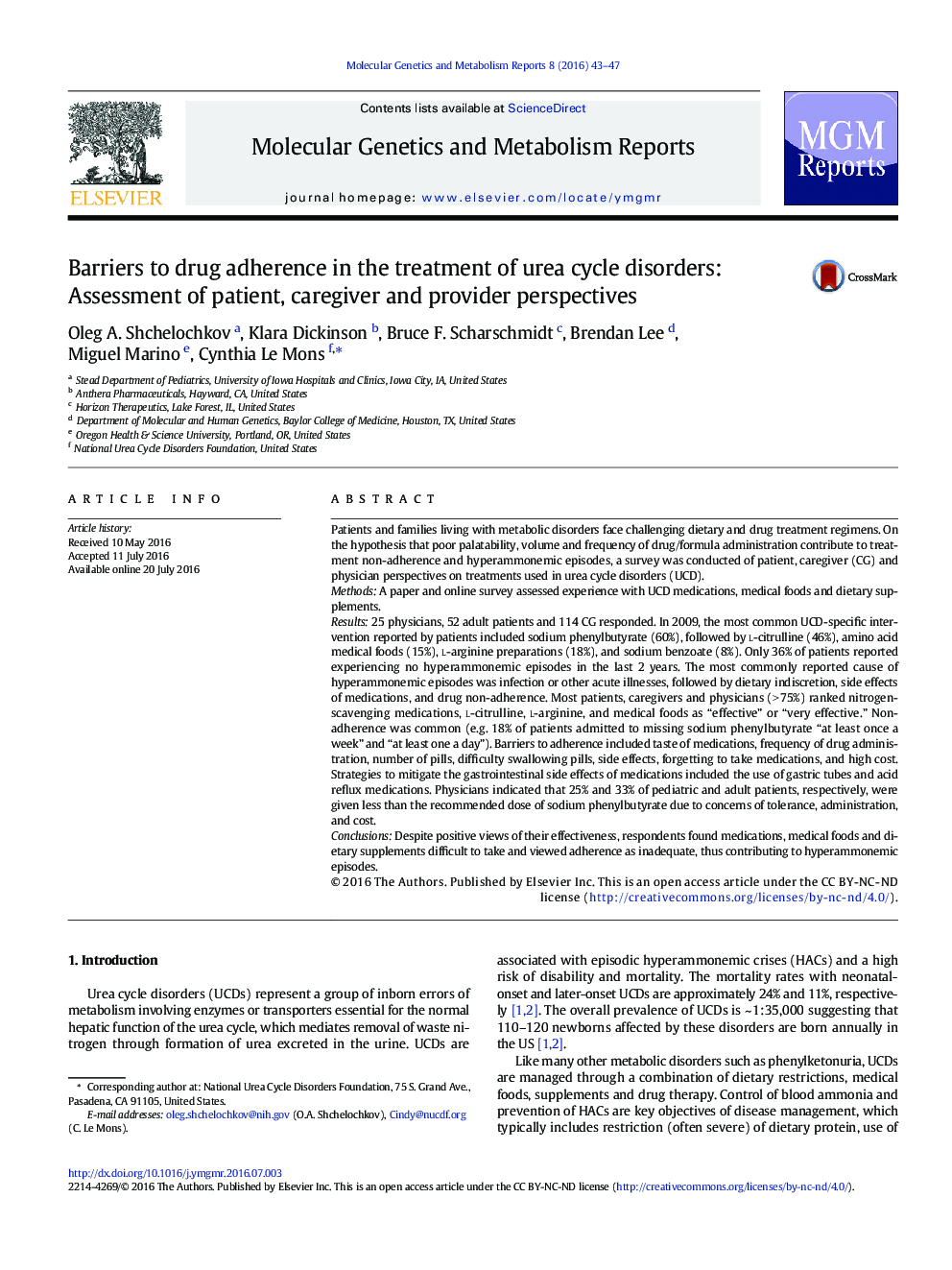| کد مقاله | کد نشریه | سال انتشار | مقاله انگلیسی | نسخه تمام متن |
|---|---|---|---|---|
| 2058822 | 1543978 | 2016 | 5 صفحه PDF | دانلود رایگان |
Patients and families living with metabolic disorders face challenging dietary and drug treatment regimens. On the hypothesis that poor palatability, volume and frequency of drug/formula administration contribute to treatment non-adherence and hyperammonemic episodes, a survey was conducted of patient, caregiver (CG) and physician perspectives on treatments used in urea cycle disorders (UCD).MethodsA paper and online survey assessed experience with UCD medications, medical foods and dietary supplements.Results25 physicians, 52 adult patients and 114 CG responded. In 2009, the most common UCD-specific intervention reported by patients included sodium phenylbutyrate (60%), followed by l-citrulline (46%), amino acid medical foods (15%), l-arginine preparations (18%), and sodium benzoate (8%). Only 36% of patients reported experiencing no hyperammonemic episodes in the last 2 years. The most commonly reported cause of hyperammonemic episodes was infection or other acute illnesses, followed by dietary indiscretion, side effects of medications, and drug non-adherence. Most patients, caregivers and physicians (> 75%) ranked nitrogen-scavenging medications, l-citrulline, l-arginine, and medical foods as “effective” or “very effective.” Non-adherence was common (e.g. 18% of patients admitted to missing sodium phenylbutyrate “at least once a week” and “at least one a day”). Barriers to adherence included taste of medications, frequency of drug administration, number of pills, difficulty swallowing pills, side effects, forgetting to take medications, and high cost. Strategies to mitigate the gastrointestinal side effects of medications included the use of gastric tubes and acid reflux medications. Physicians indicated that 25% and 33% of pediatric and adult patients, respectively, were given less than the recommended dose of sodium phenylbutyrate due to concerns of tolerance, administration, and cost.ConclusionsDespite positive views of their effectiveness, respondents found medications, medical foods and dietary supplements difficult to take and viewed adherence as inadequate, thus contributing to hyperammonemic episodes.
Journal: Molecular Genetics and Metabolism Reports - Volume 8, September 2016, Pages 43–47
